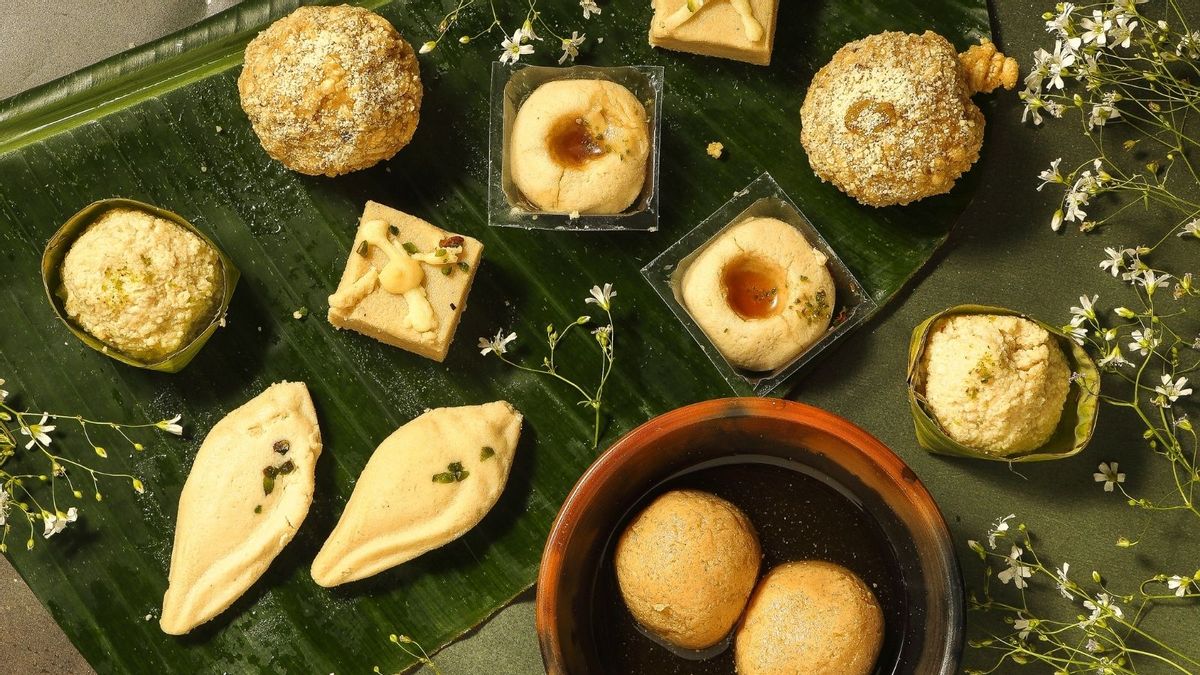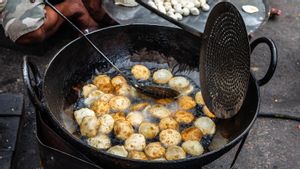One of the most famous advertisement lines from the 80s in Kolkata goes something like this: “tel to noy jeno golano shona”. It’s not oil, but molten gold. Used for mustard oil, this ad became a reference point for many conversations. However, the true molten gold of Bengali cuisine, if any, is nolen gur—whose mellowed sweetness with an earthy, smoky flavour is like none other.
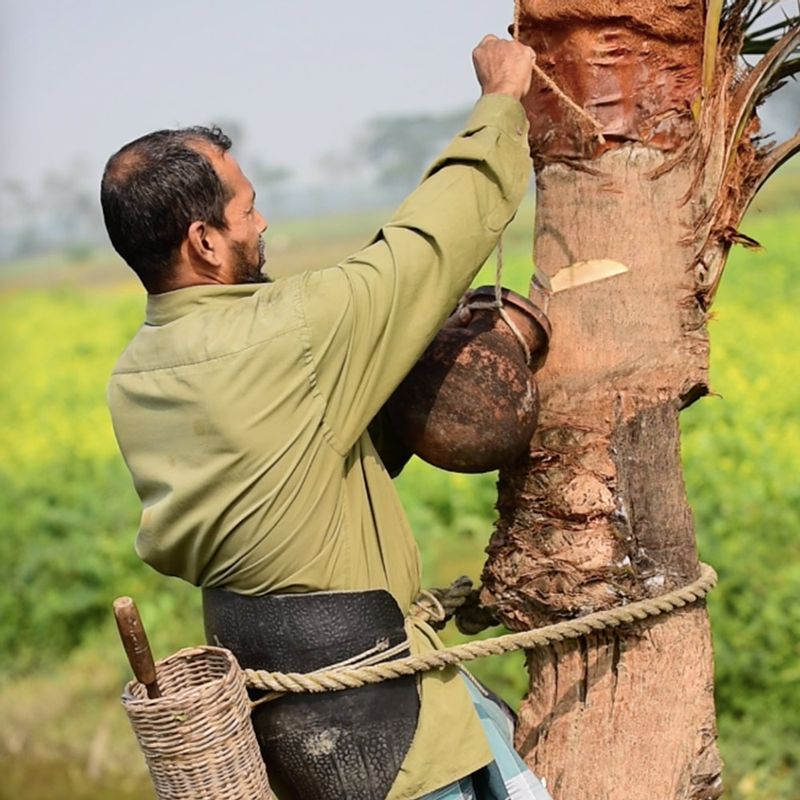
Nolen gur or patali gur, in any form offers a surreal experience. The backend process to make it involves a lot of hard work, dedication, and discipline. The process starts at the onset of the winters when the date palm trees are taken on lease by the Shiulis. In villages, the owner of the date palm trees carries out the process on their own. The Shiulis are a community of expert tree climbers who collect the date palm sap. The best sap comes out when the mercury dips. It is collected and reduced on metallic trays on a wood fire. The reduced first part—the golden part—is nolen gur, and the rest goes on to reduce further to form patali gur.
Sailen Tudu, an ex-India rugby player from Bankura and founder of Adibasi Rugby foundation, has seen gur being made since childhood. Every home in his small village is involved in gur making, with an utmost focus on quality. Sailen went ahead with his business partner Prachi Saraogi to form 'Kwidi', to promote local produce and eco-tourism. One of their best-selling products is unadulterated nolen gur shipped across India.
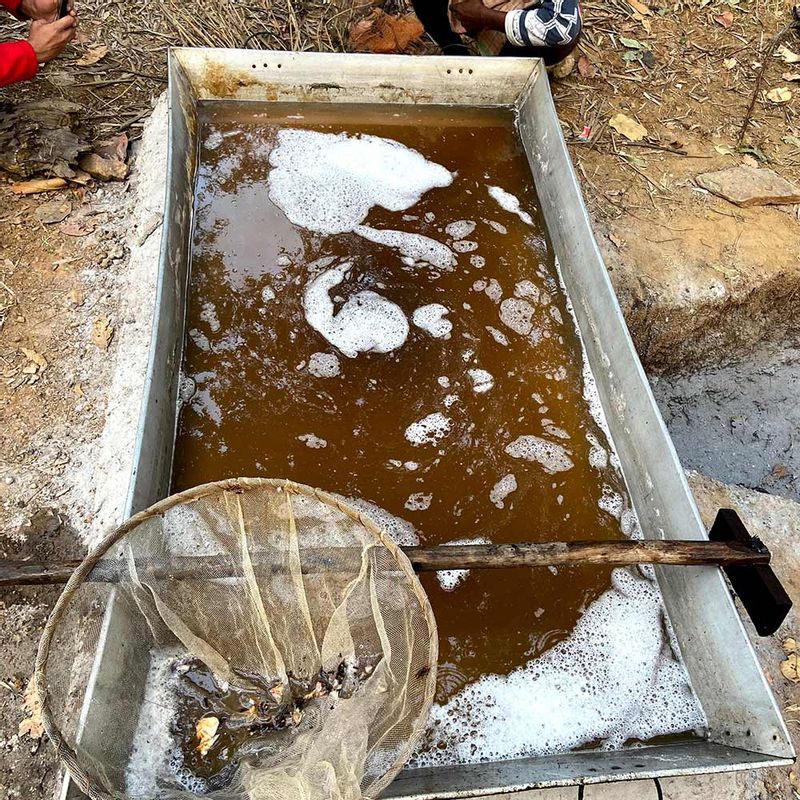
An annual winter delicacy
Nolen gur mishtis dazzle in the sweet shops at almost the same time as the monkey caps come out of the trunks in Kolkata. An avid sweet lover, the noted director and songwriter Anindya Chatterjee feels his winter is incomplete without nolen gurer mishti. He emphasises on a few classics that are a must-have in the winter. Korapaker sandesh, makha sandesh, gurer rosogolla, and even jolbhora are some of the most popular sweets in this season anchored around nolen gur. But that's not all! Sweet aficionados like Chatterjee can give you some hidden gems. Chatterjee, a self-proclaimed puritan easily takes his picks with kancha chanar payesh made with nolen gur and fresh chhena at Nokur Chandra Nandi and Girish Chandra Dey. Ratabi sandesh, an old north Kolkata classic from Bhim Nag and gurer kanchagolla from Chittaranjan Sweets are a must-try too.
Tapan Chandra Das, the owner of Nalin Chandra Das, another iconic sweet shop in Kolkata since 1841, confirms the ritual of offering the first nolen gur sweet to goddess Kali by most old-school sweet shops. For Das, they offer a special sweet called tilak. Nolen gurer monohora, nolen gurer butterscotch, mousumi, and malai chomchom are the bestsellers at this legendary sweet shop.

The use of nolen gur as an ingredient and the many innovations around it is not restricted to sweet shops. The unique flavour profile inspires everyone to cross boundaries. Chef Auroni Mukherjee, executive chef and general manager at Sienna Cafe in Kolkata, prefers nolen gur over maple syrup for pouring over toast, pancakes, and waffles. He feels the smokey, fruity, and earthy complexity of the gur makes it one of the most undeniable entities coming from the state—like ilish or Darjeeling tea. He often ferments the gur in his kitchen to use as dressing to pair with pan-roasted bhekti or salads. This Christmas, Sienna Cafe is coming out with an intelligent take on jolbhora—artisanal dark chocolate bonbons with a smoky, fruity nolen gur centre.
Nolen gur centre filled sondesh aka jolbhora is as old as 150 years. Santanu Modak, owner of Surjya Kumar Modak, the legendary sweet shop of Chandannagore and inventor of jolbhora, confirms that it was initially the rose water and date palm syrup that went inside the sweet. However, it was 150 years ago when they decided to infuse nolen gur instead.

More than just traditional mishti
The Salt House Kolkata, a plush European dine-in that focuses on local and seasonal produces in its cocktails and dessert menu, has nolen gur subbing the sugar in their mulled wine. They also have ‘Nolen Gur Old Fashioned’ with bitters and smoked oranges. The masterstroke is the modern take on Bengali patishapta. Cannoli shells piped with nolen gur, ricotta, and freshly-grated caramelised coconut are far too delicious and celebrates the season perfectly.
Surprisingly, the largest consumer of nolen gur in the country is not a sweet shop. Pabrai's Fresh and Naturelle Ice Cream, the pioneer of nolen gur ice- cream and the primary supplier across the country, started making nolen gur on request from a caterer. Anuvrat Pabrai, founder and CEO of Pabrai's, confirms that he started making nolen gur ice cream in 2007 under the brand Tulika's. Today the famous ice cream dripping with a nolen gur drizzle on top is available all across the country, and around the year. In the process, the brand uses almost 40,000 kilos of nolen gur annually—which is carefully processed with their specifications and quality control.
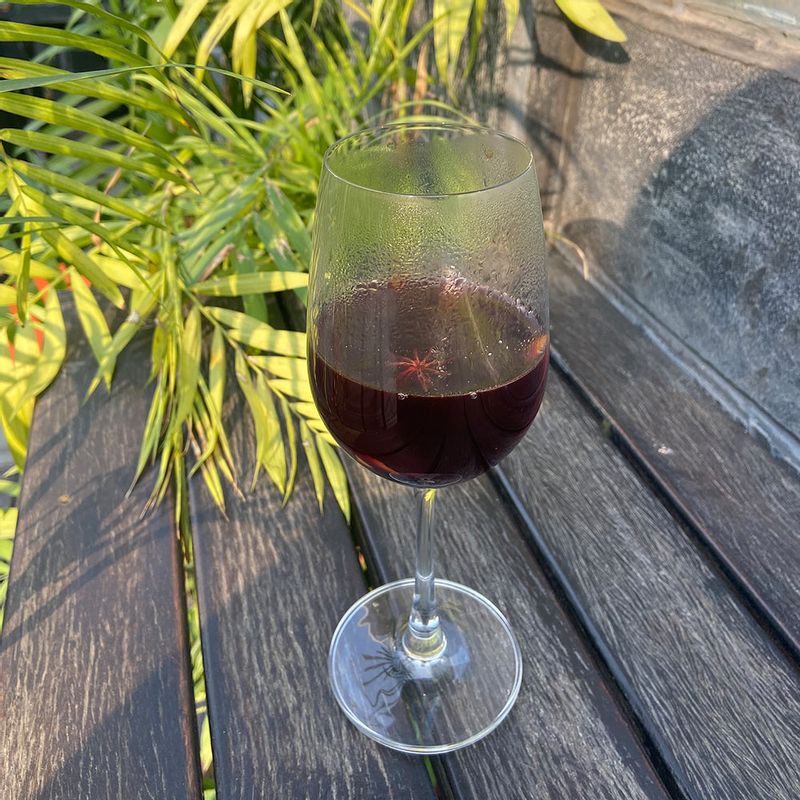
Six years ago Biswa Bangla, the initiative of the Department of Micro, Small and Medium Enterprises and Textiles, Government of West Bengal, introduced nolen gur in a tube—a revolutionary idea. As Chatterjee says—this was a boon for all who wanted to carry the much-coveted nolen gur internationally with ease. We could see the joy of the people when they received it. Since then many e-commerce portals have started sending gur to various parts of the country. Amar Khamar, which sources and sells lesser-known indigenous produce of Bengal also ensures that they procure the best of nolen gur, and they only sell it in the winter.
Does it look all shiny and golden? Preetam Bhadra, in charge of culinary innovation at Amar Khamar, highlights some problems that the industry is facing. Climate change and global warming are bringing down the quality of the sap and the quantity of the produce. Adulteration is a key challenge where the addition of sugar to the gur is very common. Although the cost goes down, the real flavour is lost.

So the next time when are having a meal at a Bengali household during the winter, ask for one of the best-kept secrets: nolen gur. You will not only surprise the host but also begin a lifelong association.


